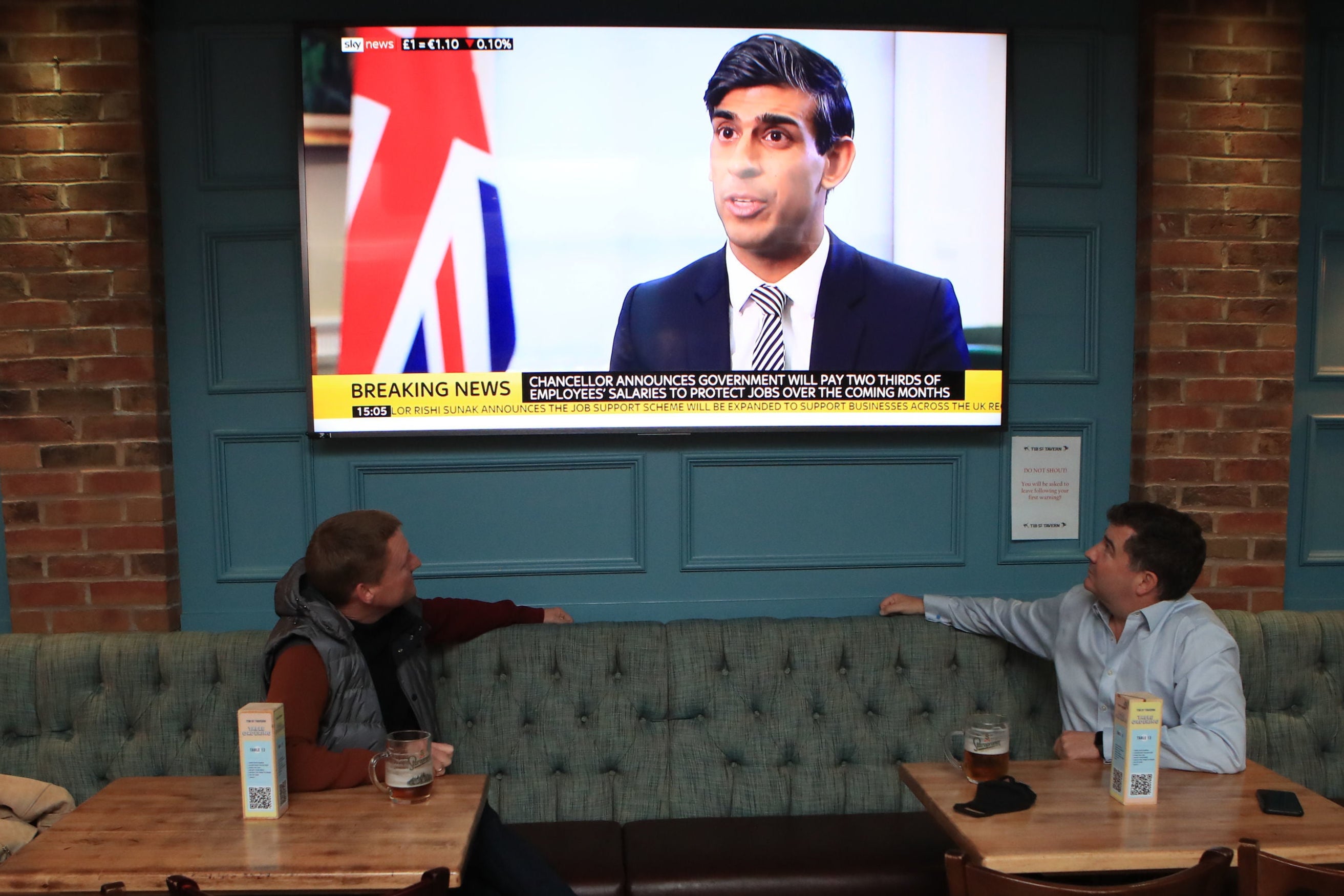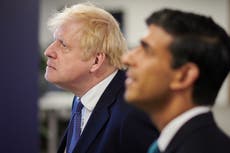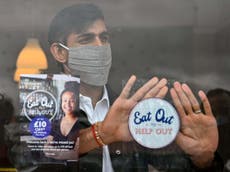Rishi Sunak’s furlough U-turn leaves him groping for a coherent economic strategy
Analysis: Does the chancellor hope to hunker down and ride out the current Covid wave in the hope that a vaccine transforms the outlook in the new year? If so, he should make that clear to firms, says Ben Chu


The furlough “cannot and should not go on forever” declared Rishi Sunak back in July.
And who would disagree with that? Indeed, who was calling for never-ending furlough? The chancellor was knocking down a straw man.
What people were pointing out was that if there was another spike in coronavirus cases and a return to restrictions on the economy it would be sensible for the chancellor to retain the option of keeping furlough (technically known as the Coronavirus Job Retention Scheme) in place.
But that was not something Sunak would countenance. The economy appeared to be recovering strongly, public borrowing was racking up at sobering rate.
There was no need for a plan B in case things took a turn for the worse, according to the chancellor. It was time for stimulus, not safety nets.
That was, as we can now see, an unwise position – and the chancellor cleaved to it for far longer than was realistic given the rise in coronavirus cases.
Though the Treasury insists today’s announcement that firms forced to close by new government health restrictions in the coming weeks and months will continue to receive funding to pay workers’ wages is not an extension of the furlough, it’s a distinction without a difference.
Furloughed workers will receive two thirds of their normal salary and businesses will not have to contribute to this. The scheme is less generous than the original furlough, with a cap of £2,100 a month for each worker (versus £2,500 previously) and a requirement for larger employers to pay National Insurance and pension contributions. It will also be available only to firms forced to close, rather than being generally available.
Yet the reality is that, for the firms and workers affected, it bears far more resemblance to the furlough scheme than it does to the short-time working subsidy of the “Job Support Scheme” that the chancellor unveiled only a couple of weeks ago.
The chancellor has essentially retreated from his position on 24 September, when he unveiled his “Winter Economy Plan”, that it was time to allow “unviable” jobs to be shed by firms. The underlying logic of this furlough extension is that such judgements are simply impossible at the moment, that there is no way for, say, a restaurateur in Manchester or a nightclub owner in Leeds to know how many staff they will need next year.
The reversal is sensible, but it’s important to note that many firms will have shed jobs in the past fortnight. Some might have made a different decision if they knew this U-turn was coming.
The question is where today’s decision leaves the chancellor’s broader economic strategy. Is it simply to hunker down and ride out the current wave of cases in the hope that a vaccine transforms the outlook in the new year?
That wouldn’t be an unreasonable position under the horrendous circumstances. But it would be preferable to spell this out so firms have some clarity after the policy and rhetorical yo-yo-ing of the past fortnight.
Recent months have seen a debate among economists about whether it’s preferable to try to keep people in their current jobs or to help them move to new ones.
It’s theoretically true that people would be better off if they moved into jobs with a future sooner rather than later. It’s preferable for people to progress, rather than to allow their skills to erode on furlough and watch other potential opportunities go by.
Yet this argument always rested on the assumption that there were new jobs being created for people to go into. That was always rather doubtful given the collapse of vacancies. And recent days surely cement that reality.
New estimates from the Office for National Statistics confirm that the momentum of the recovery was moderating in August, even before the “rule of six” and 10pm curfew were imposed. New local lockdowns can be expected to slow things down even more. There’s little likelihood of most firms going out to hire given these levels of uncertainty.
Faced with a choice between keeping many workers on furlough and seeing them slide into unemployment, the Treasury has chosen the former (although redundancies will surely rise in any case).
Rather late in the day, the chancellor has accepted that demolishing a straw man cannot fend off reality and that sometimes an undesirable decision is the lesser of two evils.



Join our commenting forum
Join thought-provoking conversations, follow other Independent readers and see their replies
Comments